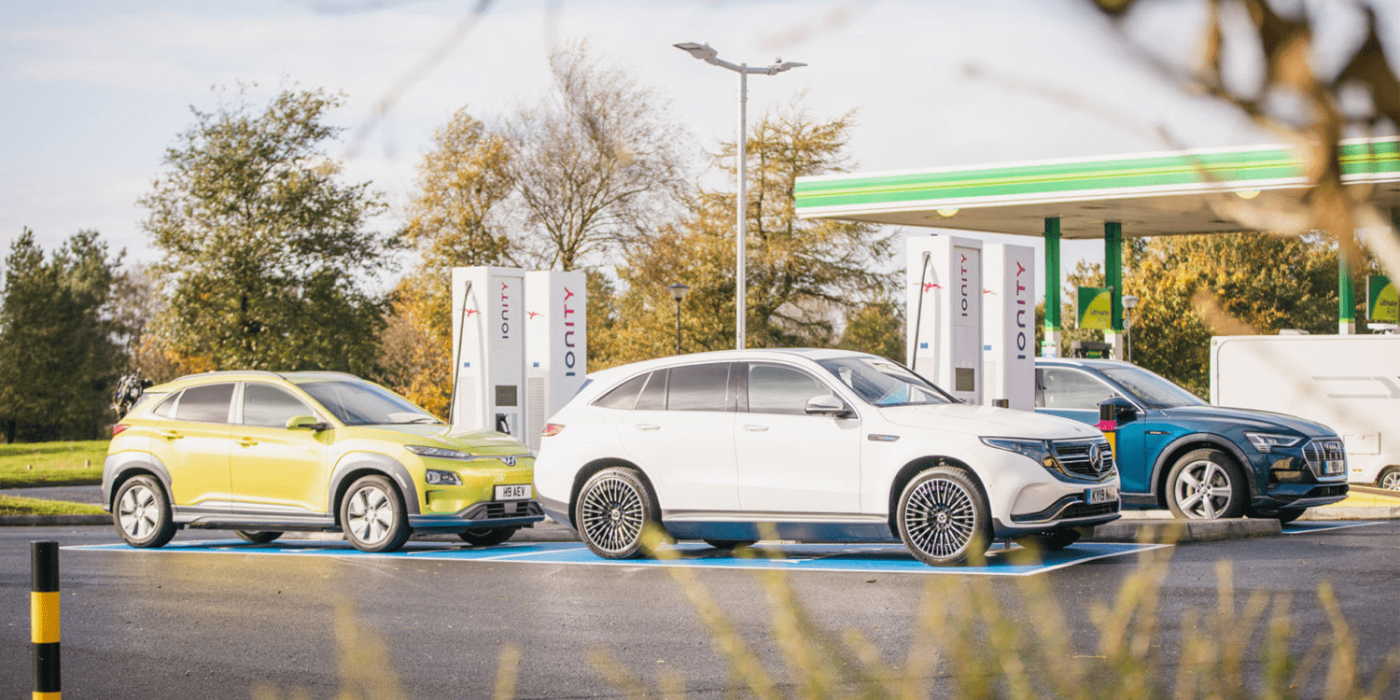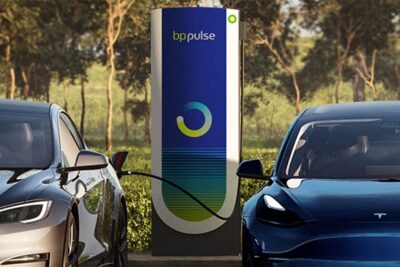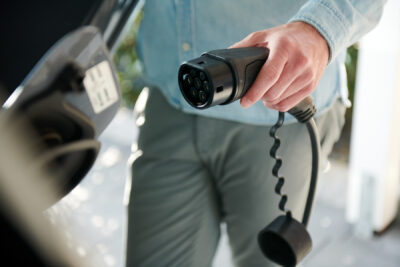Ionity launches first Scottish HPC parks
Ionity is pushing ahead with the expansion of its high power chargers (HPC) with new locations. In Gretna Green, Scotland, the first of six planned Ionity sites in the country has now been connected to the grid. Construction of new Ionity charging sites is also progressing in the rest of Europe.
The Gretna Green site in Scotland is located directly behind the English-Scottish border on the A74 where four HPC charging stations with a charging capacity of up to 350 kW were installed. Ionity is planning a total of 40 locations in Great Britain, each with up to four charging stations.
In the UK, Ionity is working with the Motor Fuel Group (MFG), which operates around 900 filling stations of various brands – the HPC chargers in Gretna Green are also located on the site of the filling station operator. “Close collaboration with site partners like MFG is crucial to achieving a zero-emission future and IONITY’s network is finally giving EVs in the UK the kind of charging speeds their owners want,” said COO Markus Groll.
Other companies, such as Pod Point, are also working to set up fast chargers in the UK. Fastned operates an HPC charging park in Sunderland, where two CCS posts with up to 175 kW are located – due to the proximity to the Nissan plant there are also a number of CHAdeMO chargers there. BP Chargemaster is also setting up a network of 150 kW charging stations, mainly at BP filling stations.
Ionity is also making progress outside the UK. The company posted a photo on Twitter announcing the opening of the first Spanish site in Palleja. In addition, the station in Nempitz near Leipzig is also live after an unusually long construction period – albeit initially with only three out of six charging posts.
https://twitter.com/IONITY_EU/status/1185179589489901568
With their new charging parks, Ionity has recently passed the 150 site mark. The goal is to have 400 sites in operation by the end of 2020 – which currently means that every second day a new charging park would have to be connected to the grid. More will be added in Germany soon: Construction work on the Frankenhöhe North and South service stations in Bavaria and Auetal North and South in Lower Saxony have recently begun, and 15 more motorway service stations are currently being built in Germany.
The first charging stations with the new Ionity design will also soon be built in Germany – but when and where exactly, has not yet been decided. At the IAA, Ionity had presented the first charging posts in its own design; so far, the appearance of the posts and the menu navigation largely corresponded to that of the manufacturer’s charging posts – i.e. Tritium, ABB and, in some cases, Porsche Engineering. Tritium is now the first manufacturer to produce the posts in Ionity design. Later, ABB will also produce the Ionity chargers in order to maintain the multi-supplier principle.
The new design is the result of a user analysis by Designworks and is intended to make the charging experience more comfortable, safer and simpler than before. Compared to the charging stations currently used by Ionity, the cable routing has also been changed. The charging cable should now be much easier to handle thanks to a feed from above – and not dragged on the floor. For the customer, charging should also be easier because of the new screen. With its own HMI system, the menu navigation is to become more intuitive and, above all, more uniform.
The charging stations in the new design not only play a role in the construction of the remaining stations of the currently planned 400 charging stations in Europe, but also in the period after 2020. Hyundai-Kia’s entry into the circle of shareholders of the joint venture could have changed the financial possibilities for plans from 2020 onwards – whether it be the expansion of the existing charging stations with more charging stations, new locations or even HPC chargers in city centres.
current-news.co.uk, greenfleet.net, fourcourttrader.co.uk, twitter.com (Spain)





0 Comments